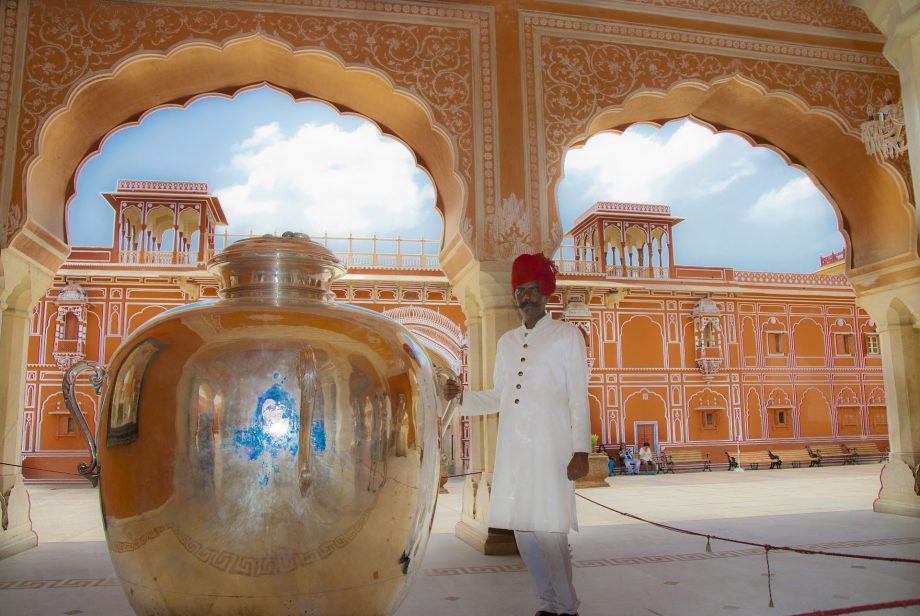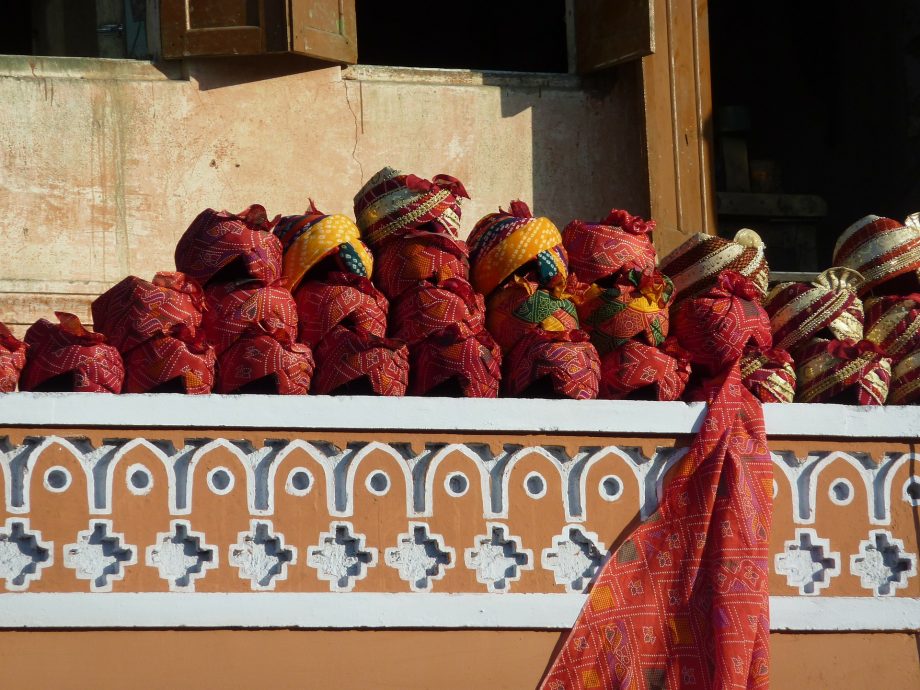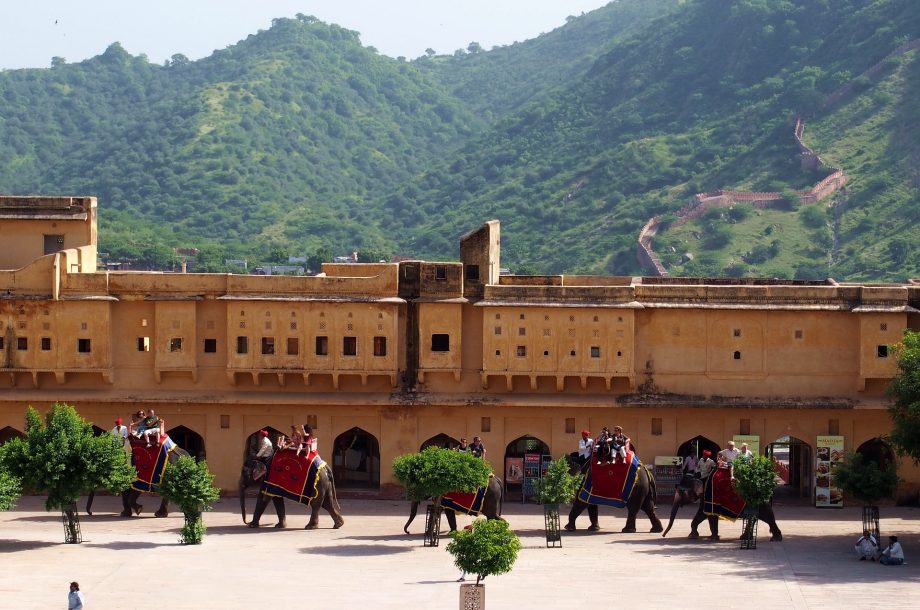Visit Jaipur, India

Jaipur, the famously fortified pink city, is one of the most popular cities in India and is well known for its royalty, traditions, arts, architecture and culture. Founded in 1727 by Maharaja Jai Singh II, a Kachhwaha Rajput, who ruled from 1699-1744, Jaipur was built in response to an increasing population and a lack of access to water. Jaipur was the first planned city of India and construction started in 1727. It took around 4 years to complete the major palaces, roads and square and it was built following the principles of Shilpa Shastra, the Indian Architecture. Jaipur is in fact built in the form of a nine-part Mandala known as the ‘Pithapada’. Nine signifies the nine planets of the ancient astrological zodiac.
The commercial district was designed in multiples of nine with one cross street for a planet. The city itself followed suit. It was divided into nine blocks, two of which were the state buildings and palaces, the remaining seven blocks were allocated to the public. At the centre lay the palace, the administrative quarters, the Jantar Mantar (the amazing observatory) and the janana mahals (women’s palaces), which housed the king’s many wives. It was a product of its era and possibly the best example of modern architecture in the Indian subcontinent at the time.
The city was painted pink to welcome the Prince of Wales in 1853. Pink being the colour of hospitality, and it has retained its dreamy pink charm to this day.
Getting Around
As of 2024 Jaipur has a population of 4.3 million people – Jaipur is a city of people, so there are people everywhere. All these people mean traffic, congestion, and crowds; the majority of the time you will get somewhere faster on foot, than in a vehicle. Bicycles are the most popular and least expensive way to get around the city, but they definitely aren’t the safest. On the other hand, elephants are slow, but they will take you (and get you) where you want to go (people will almost certainly get out of your way!)
If neither of these appeal or you have to get somewhere quickly, use a motorised or bicycle-powered rickshaw. The former is India’s version of a taxi, and because of its size, it is more efficient on the country’s crowded streets. A bicycle-powered rickshaw is smaller, but costs less and is pollution-free. India’s official bus service, State Roadways Transport, also serves Jaipur, but their mini buses are all too often rammed and it is a regular sight to see people sitting atop them. Not the safest way to travel!
Car Rental is really the only sane choice for getting around Jaipur. Even better, hire a chauffeur. The locals know how to move around the bicycles, rickshaws, elephants, camels, and bipeds you will meet along the way.
Eating out in Jaipur
As a visitor to Jaipur you can’t say you have truly experienced it until you sample some of the local cuisine. And Jaipur is a foodie’s paradise. If you’re new to this cuisine you can’t return without trying dal bati churma – the flagship dish of Rajasthani cuisine, a fusion of three separate foods, it is a complete supper on its own. No Rajasthani party or wedding menu is complete without this famous dish:
- Dal – spicy lentils.
- Bati – a baked ball made from flour which is then covered in ghee and eaten with the dal.
- Churma – a flaky sweet dish made from flour that goes afterwards.
You might also want to try:
- Spicy keema baati – two huge round flour balls, deep fried and stuffed with spicy keema.
- Ghevar – one of the sweet dishes of Jaipur, traditionally prepared for the Teej Festival, it is disc-shaped and made from oil, flour and sugar syrup.
- Ker Sangri – a dish which originated years ago when drought struck Rajasthan. These were the only vegetables which grew so the locals had to make do. They cooked them up with spices and turned them into a national dish.
- Gatta ki sabji – made with boiled flour dumplings and simmered in yogurt curry, this is a very popular side dish which is also great to eat with hot puris or chapattis.
- Mawa Kachori is an exotic dessert, a delicacy from Rajasthan.
Brought to you by the Global Circle Club. Get member access to over 1,000,000 hotels & hostels worldwide where you can save up to 40% compared to tourist rates and get free access to our international GLOBAL CIRCLER community!
Art and Crafts
The city’s rulers used to invite skilled artists and craftsmen from across India and abroad to display and share their abilities with the people of Jaipur. This resulted in many of them settling there, leading to the development of Jaipur as the haven of rich art and culture that it is known for today. Some of the artful talents of artisans include: block printing, stone carving, sculpture; silver jewellery, gems, jewellery, miniature paintings, pottery and leather ware.
Performing Arts in Jaipur
Jaipur has its own performing arts. The people of this lively city are friendly and warm and their colourful outfits and unique jewellery are a part of their culture which they show off in such a flamboyant way. They love to dance to the tunes of Rajasthani folk songs. Famous dances of Jaipur include Ghoomar and Chari, where the dancers dance on a pot with a lit diya on their head. Traditional instruments like the Sarangi, Ektara, and Jhalar are played to accompany the singers.
Jaipur Fairs and Festivals
This city witnesses various fairs and festivals at different time of the year. Some of which include Gangaur festival, Jaipur Literature festival, the kite festival, Teej festival, Shitla Mata Fair, Chaksu Fair, Elephant Fair, Chhat ka Mela in Amber during Navratri.
Day Trips In and Around Jaipur
If you want to explore outside of Jaipur there is so much to see, you don’t need to venture far to experience some truly awe-inspiring sites.
- Amber Fort – Amber Fort is set on a hill top overlooking Maota Lake. It was the original home of Rajput royalty until Jaipur city was constructed and contains a number of breathtaking palaces, halls, gardens, and temples. Inside, the elaborate mirror work adds to the grandeur. Built in 1592 Amber was originally the capital, sadly anything built before then is in ruins today but you will find some foundations built after this time that are in surprisingly good shape. An elephant ride will take you to the fort and through the gate, if you just go for that it’s worth it. There is as an evening sound and light show which brings the fort’s history alive.
- Rantambhore National Park – This is a conglomeration of three wildlife preserves, covering an area of 1,334 square kilometers. Although it was once the official hunting ground of Jaipur royalty, the park is now the exclusive home of the imposing Royal Bengal Tiger. The park is a train ride away from Jaipur, stopping off at the Sawai Madhopur station, or you can take a bus.
- Delhi – This isn’t exactly off-the-beaten-path from Jaipur, but rather directly-on-the-way, depending which way you arrive. If you are going all the way to Jaipur, then a trip to India’s capital Delhi will compliment your journey nicely. Though densely populated, the city has enough architecture and culture to make you want to don a turban or sari and blend right in.
- Nahargarh Fort – Also known as Tiger Fort, is perched high on the rugged Aravali Hills overlooking Jaipur city. The fort was built in 1734 to help defend the city and it found fame again in 2006, after many scenes from the Indian movie Rang De Basanti were filmed there. Nahargarh Fort offers spectacular views all around, which are best seen at sunset.
- Monkey Temple – Located on the far eastern side of the city, outside Galta Pol, near Agra Road, getting to this rather ruinous but holy Hindi temple is quite an adventure but it’s completely worth the effort. The temple is part of a larger temple complex, which also has three sacred pools of water. One of the pools has been taken over by thousands of monkeys that congregate there to swim and bathe. They’re generally friendly and love to be fed. Unfortunately, the area is not well maintained. Be prepared to encounter dirt and trash, as well as priests and pseudo holy men coercing people for money.
- Elefantastic – If you can’t get enough of elephants then this is your opportunity to get up and close with some of India’s much loved elephants for a day. An elephant farm in an elephant care village, Elefantastic was formed in 2012 to promote the wellbeing of these giant creatures and show tourists that not all of them are mistreated. Before starting Elefantastic, Rahul (the founder) worked as an elephant rider for nine years. At Elefantastic, you’ll be able to wash, feed and water the elephants, learn about elephant decorating and have a painting class, and learn about the elephants’ medicines and treatments. Numerous options for elephant rides and safaris are offered, both in Jaipur and the surrounding countryside.
Fancy a trip to Jaipur, India?
Find the best hotels and flight deals to Jaipur with The Global Circle Club
Already a member of The Global Circle Club? Login to your member account to get the best hotel, car hire and flight deals. Not a member yet? Sign up for free membership, no membership fees, no hidden fees, over 1,000,000 hotels & hostels worldwide where you can save up to 40% on hotel rates and more…



